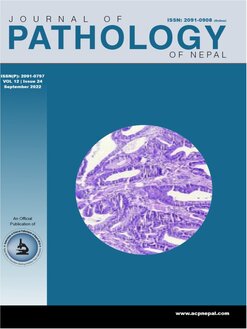Role of image guided fine needle aspiration cytology of lung lesions in patients visiting Gandaki Medical College
DOI:
https://doi.org/10.3126/jpn.v12i2.51747Keywords:
Fine Needle Aspiration Cytology; Lung lesions; Squamous cell carcinomaAbstract
Background: Computed Tomography guided Fine needle aspiration cytology of lung mass is an effective modality to diagnose lung cancer. Its use has been extended in differentiating lung tumors into various cytomorphological types so that it becomes easier for further treatment. The study is aimed to study the morphological features of various types of lung lesions, correlate with histopathology wherever possible and evaluate the sensitivity, specificity, and accuracy of fine needle aspiration cytology procedure.
Materials and Methods: It is an observational cross-sectional study conducted in the Department of Pathology of Gandaki Medical College and Teaching Hospital from April 2018 to December 2020 and 109 cases were included.
Results: In the study, 109 cases were included, female were 61(56%) while males were 48(44%) with an M: F ratio is 1:1.2. The maximum number of cases was seen in the age >70 years (45.9%), mean age being 68.4years. Smoking was seen in 66(60.6%) cases. Squamous cell carcinoma (SCC) 32( 29.4%) was the most common cytological finding followed by adenocarcinoma 20(18.3%). Similarly, SCC was the most common histopathological finding which comprised 30( 53.5%) followed by adenocarcinoma 14(25%). Fine needle aspiration cytology and histopathological diagnosis are significantly associated with a p-value <0.001. The sensitivity, specificity, and accuracy of fine needle aspiration cytology were 76%,80%, and 76.6% respectively.
Conclusions: Computes tomography-guided fine needle aspiration cytology is a relatively safe, inexpensive, and accurate procedure in the diagnosis of different lung lesions for early diagnosis and appropriate treatment.
Downloads
Downloads
Published
How to Cite
Issue
Section
License
Copyright (c) 2023 sunita

This work is licensed under a Creative Commons Attribution 4.0 International License.
This license enables reusers to distribute, remix, adapt, and build upon the material in any medium or format, so long as attribution is given to the creator. The license allows for commercial use.




